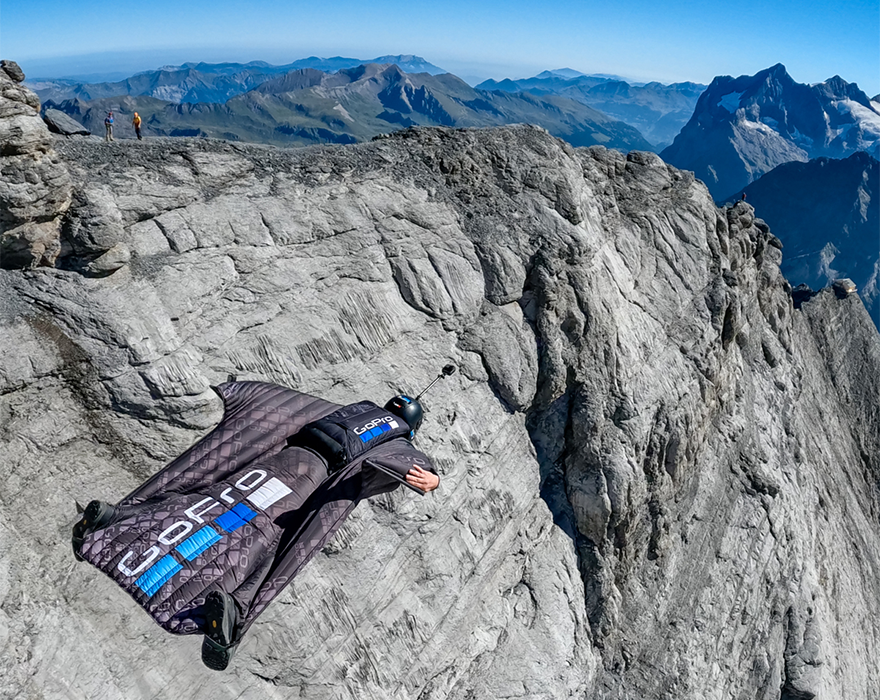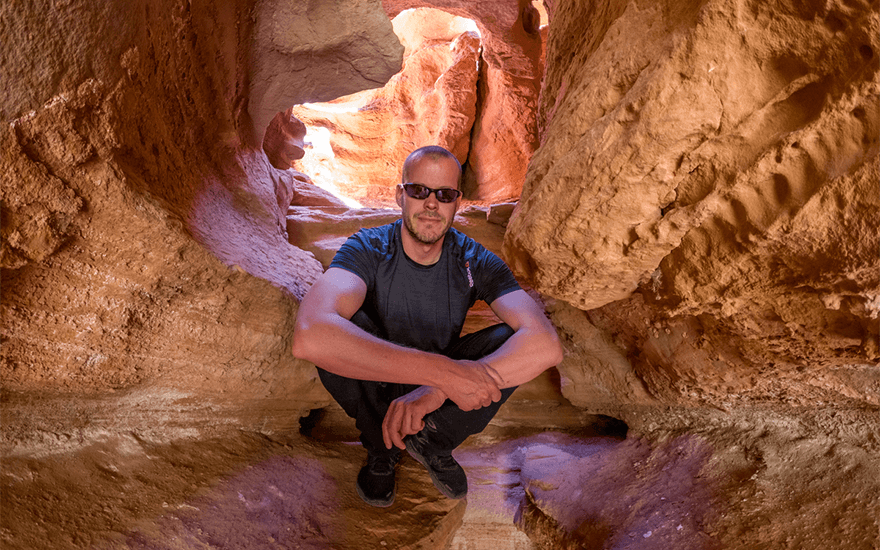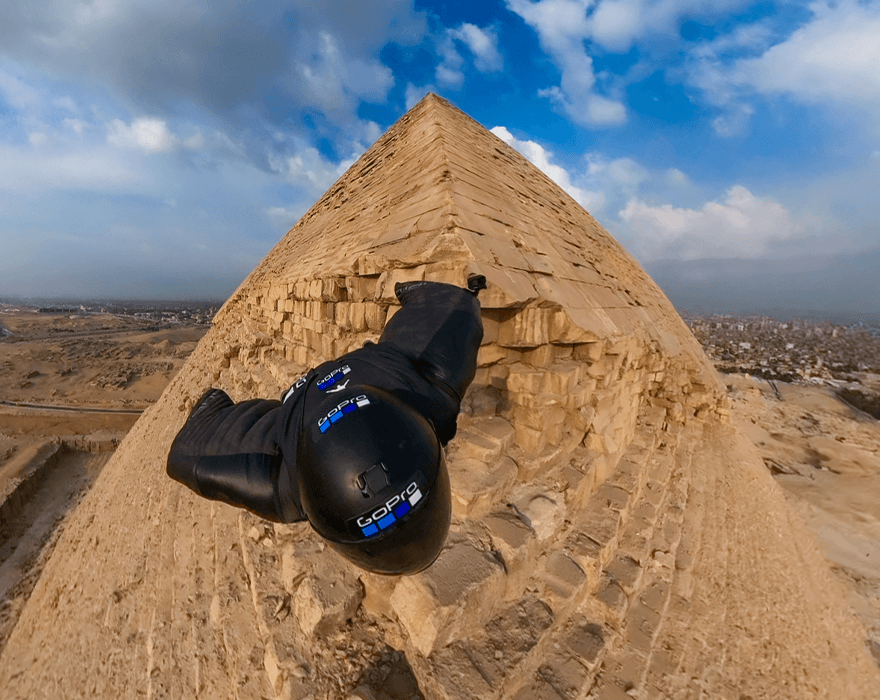Photography by Gabriel Lott
“If the sport doesn’t kill at least a percentage of its participants every single year, it isn’t an extreme sport.”
In January 2012, Jeb Corliss stood at the top of Table Mountain in South Africa, ready to hurl himself off the iconic 3,558-foot landmark.
At that point in his life, the American was the world’s most renowned and noticeable figure in the extreme sport of BASE jumping and a recognizable wingsuit pilot, racking up over 1000 jumps and flights across multiple continents.
Corliss was filming with HBO, donned in his wingsuit – commonly called “birdman” or “squirrel” suits – for the next installment of his career on the edge of risk.
This wasn’t the first time he found himself on Table Top Mountain.
Ten years ago, Corliss narrowly avoided his demise in the same spot, so the demon of that terrifying ordeal needed to be exercised for him.
While returning to the scene of a near-death experience, putting yourself through the same ordeal seems counterintuitive to the “normal” human mode of thinking, Corliss does not operate in the sphere of normality.

After all, since the age of six, this man has dreamt of flying ever since watching birds jump from telephone poles in the back of his aunt’s car.
He has jumped from some of the globe’s most well-known spots; the Eiffel Tower, Golden Gate Bridge, Angel Falls in Venezuela, and the Petronas Towers in Kuala Lumpur.
A Leap of Faith…
A year before the second installment of Table Mountain, he flew feet from the ground in the Swiss Alps as part of a 20/20 feature on ABC before swooping through an arch in the side of China’s Tianmen Mountain two months later. Millions watched in awe.
Following five successful and seamless jumps, Corliss decided a sixth leap of faith was required, this time a deeper descent with increased danger.
Traveling at 120mph, Corliss attempted to clip a balloon, and after he cut his left leg at the most critical time, his waist took the full impact. The impact flung his body like a rag doll, causing him to tumble down to earth, seemingly to his death violently. In fact, Corliss was resigned to his seemingly inevitable fate.
Showcasing the expertise which had seen him become one of the elites within the sport, he continued to fly before deploying his parachute at the crucial moment.
He survived, slamming into the South African rock but not unscathed. The crash left him with two broken legs and a torn ACL that required reconstructive surgery.
Call it a sliding doors moment. Call it a wake-up call. Call it the start of a redemption arc. Whichever way you look at it, Corliss vowed to be more careful following a year-long rehabilitation period, telling Outside that his jumping was now 100 percent work and the sport was too dangerous to do for fun.
The idea of never jumping again was something he laughed off, with the extreme nature of the sport something he could not live without.
“I was once asked by a reporter, “When is enough enough? When will you stop BASE jumping”? I responded, “Would you ever ask a bird when you will stop this silly flying thing? If you could fly, would you ever give that up?
“I do what I do because I like to push the boundaries of what humans believe is possible. I am trying to evolve into something new. Imagine how long it took squirrels to develop the ability to fly.
“How many hundreds of thousands of years did it take before they could glide on air from tree to tree? Humans are amazing; we don’t have to morph our bodies to evolve, and we use our minds to develop technology to evolve acceleratedly.”
What Motivates Corliss?
Corliss isn’t motivated by the sensation he gets from the jumps, going as far as to say he “hates adrenaline” and “always has”.
The idea that the need for an adrenaline rush fuels extreme sports athletes is a common conception. According to a 2021 paper by Giuseppe Musumeci, “sensation seekers” are characterized by a need to try the extreme in search of thrills, even though it implies doing dangerous sports.”
“These kinds of people avoid trivial experiences because they need high-emotional situations – like drug addicts – developing a sort of “shivering tolerance”, forcing them to seek higher doses of emotion every time to reach the same sensation as before.”
“When this occurs, they get used to the same extreme challenge and start looking for a more intense one, to feel the thrill again, risking death just as might happen in drug addiction.”
Corliss evidently doesn’t class himself as a “sensation seeker”.
“I absolutely hate adrenaline and always have, and I have never been motivated by how things make me feel.
“If I could live a life of adventure without having to experience the gut-wrenching, somewhat nauseating feeling of adrenaline, I would. But adventure is something that is in a person’s DNA.
“Some people need these kinds of activities to find happiness and purpose in their lives. Some people need these things to survive and would die without them.”
That need to continually push the boundaries of what humans are capable of led him to one of his most death-defying spectacles in 2013, just a year after his incident at Table Top.

Representatives from Red Bull China approached Corliss, offering him a unique proposition.
Pilot his wingsuit through a unique narrow slot on 875-foot Langshan Mountain, a particular landform punctuated by curvaceous cliffs and many unusual rock formations in Xinning County, China.
Initially, the answer was no. Still burdened by South Africa’s accident and skeptical of the formation’s safety, an in-person viewing was needed. Upon witnessing the V-shaped slot – 60 feet wide at the top but only 15 feet wide at the bottom – his desire to step out of his comfort zone defeated the voice of trepidation, attempting to overrule his inevitable choice.
A Sense of Adventure…
Inspired by his mother, an art dealer who collected pieces from the likes of Nepal, India and Afghanistan, Corliss’ passport was complete by the age of seven, an early experience that he believes planted the seed of adventure into his soul.
He told “Medium” she showed him “how taking risks in life is the only way to achieve truly great things,” but even Corliss couldn’t deny the level of risk associated with this jump.
A recent typhoon caused havoc with his preparations, leftover rain and wind deemed flying too dangerous, ultimately resulting in Corliss only getting three practice jumps, none of which saw him enter the crack.
There were zero margins for error, with a starting flight elevation of just 875 feet – a number customarily reserved for parachute deployment – while he needed to exit at around 300 feet to stand any chance of a safe landing.
As if all of that wasn’t nerve-inducing enough, the flight would be broadcast to an estimated 350 million viewers in China, Hong Kong, and Taiwan as part of a live television event while Pan Pacific Productions documented the process in the 50-minute film Flying Dagger.

As production crews set up multiple cameras, thousands of spectators gathered in the field below, and millions tuned in; dark clouds lingered above Jiangling’s giant peaks.
The spectacle was in doubt, with a frustrated Corliss ready to call it off. At that point, who could blame him; winds faster than six miles an hour could be fatal.
But then, as if by divine intervention, serenity swept over the mountains. The jump was back on. Tears were shed in the helicopter before he embarked, a genuine fear sweeping over his body, with 2,000 crew members and 90 search and rescue staffers holding their breath on the ground below.
“I flew through the mountain at over 120mph and was in a kill zone where I would have died if I didn’t fly my wingsuit at a 3:1 glide ratio for over 1.2 kilometres.”
The footage of the flight is as mesmerizing as it is terrifying. Visibility is low as the target comes into sight, the mountain’s V-shaped exterior resembling a two-finger peace sign as Corliss lines up his approach.
The turbulence from his wingsuit bounced off the narrow walls, making for a bumpy experience, but he threaded the needle perfectly, hitting a top speed of 122 mph through the crack.
Corliss stated it was the most terrifying thing he had ever done and wouldn’t do it again for $10 million.
Proof, if it was ever needed, that even the most extreme of us have their limitations, but no one compares to Corliss in terms of pushing the boundaries of human flight.
He has since gone on to be a keynote speaker and a technical advisor for films and documented his life story in his 2022 book, “Memoirs From the Edge: Exploring the Line Between Life and Death”.
He answered a single word when we asked him what his proudest moment was.
“Surviving.”






